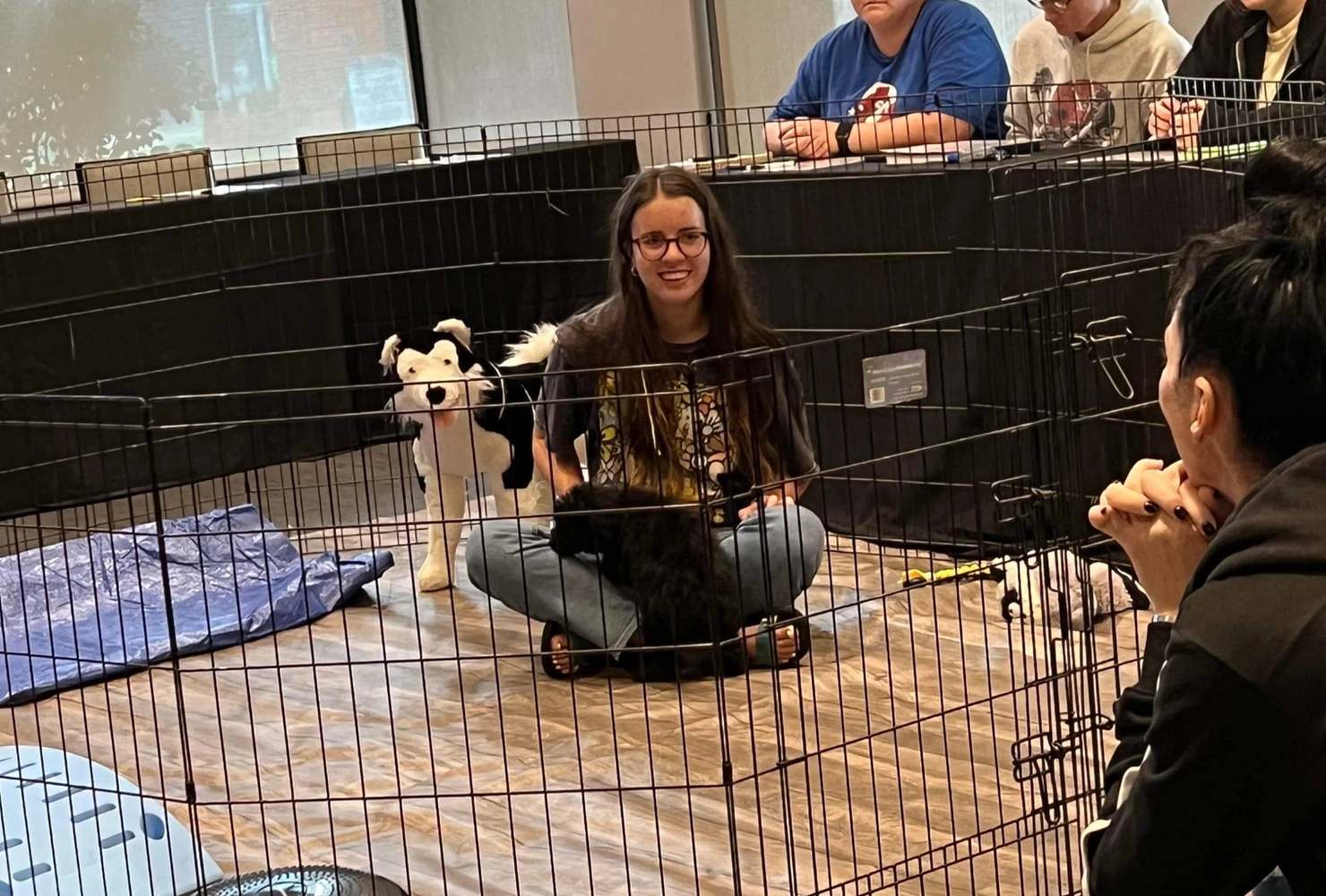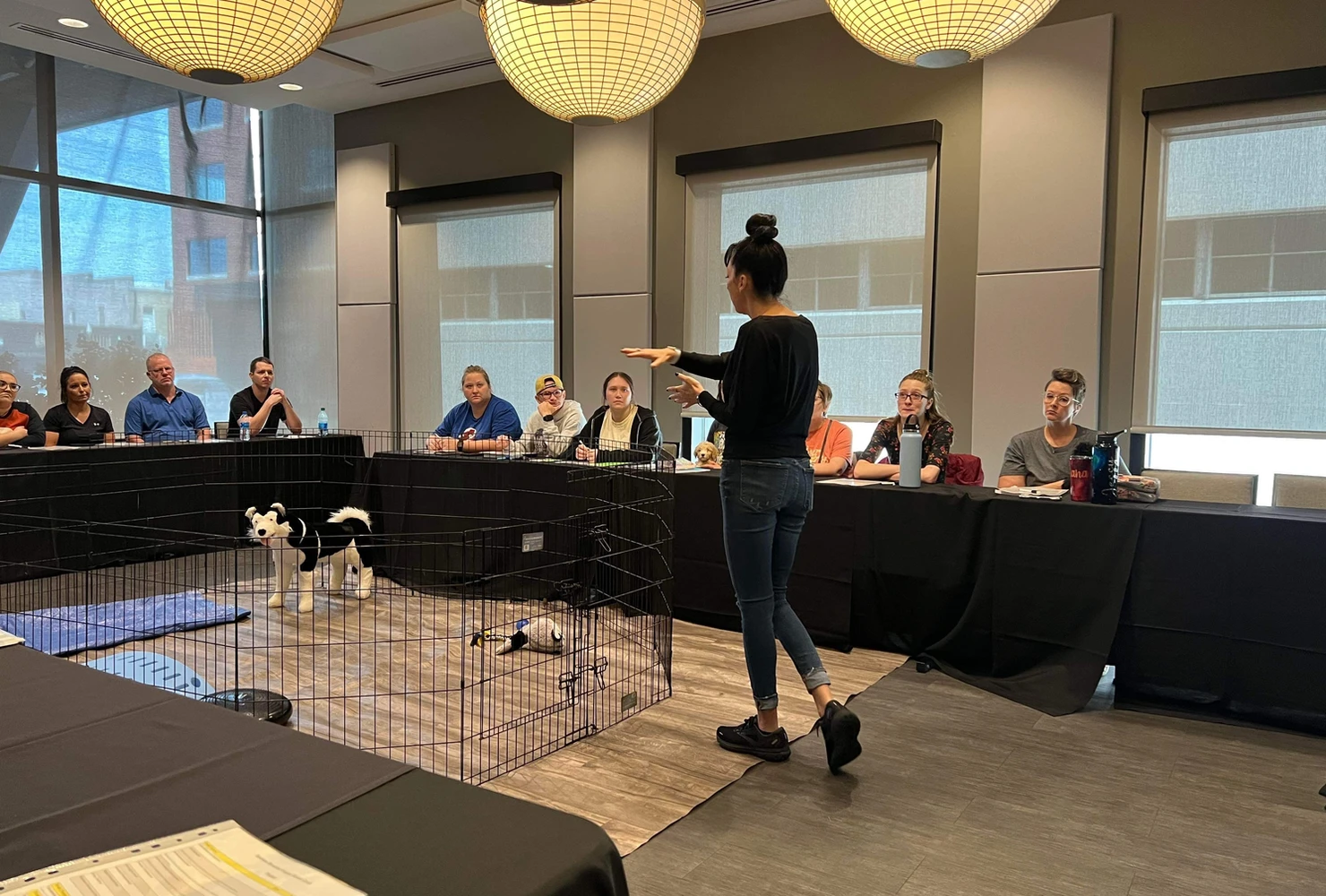What is Temperament Testing?
- Abigail
- Jun 10, 2024
- 10 min read
Updated: Aug 5
Everyone gets a dog for different reasons. Being intentional about temperament testing and learning about the lifestyle of our families is what creates those magical matches. We believe the “tale” of a dog and their family should be a happily ever after, forever story! The biggest factor in creating a forever tale, is matching a family with a dog that has the temperament that truly matches their lifestyle.
Temperament Testing
After working with Bluegrass Bernedoodles for the last few years, I truly thought that everyone knew about temperament testing. I remember talking to a girl at a wedding who said she was getting a miniature goldendoodle. I said, “Wow, that’s so exciting! What’s her temperament like?” When she said, “I’m not sure, what do you mean by temperament?” I got so confused. I said, “Wait, the breeder didn’t go over the temperament with you?”
I’ve listened to LeAnne talk on the phone about puppy temperaments for years. After hearing so many families rave about how their dog was such a great fit, I thought temperament testing was “industry standard”. Clearly, it should be. The Bluegrass Team had the opportunity to go to Jeanette Forrey's training and learn from the very best all about this. Here's some photos from their trip!
Recently, I’ve been researching a lot more about it! I’ve always loved personality tests like the enneagram and love languages… and to me, temperament tests are the dog version of that for sure, but in an even bigger way! After taking about 2 hours worth of notes on Jeanette Forrey’s 12 Puppy Temperament Traits video and diving into her book all about it, I’m intrigued (and a little obsessed) and here’s why…
Choosing a puppy simply based on their gender, a picture, or even their coloring doesn’t give us the chance to truly get to know them. We don’t choose our own forever partner simply based on a picture, right? (HECK NO!) We absolutely always allow our families to choose what puppy is right for them, but after we’ve shared not only pictures and videos, but their temperament too. We love to FaceTime with our families and explain the different temperaments of each in the litter. Or even a specific few that have temperaments that line up with their needs, family, or lifestyle. That way they get the chance to truly meet the puppy and are not choosing only based on looks or gender. We love to share more about their energy level, their confidence, and even nerve strength just to name a few.
Let’s dive into some of those temperaments more! Before we do, it’s super important to know:
IMPORTANT: Temperament vs. Gender
No matter the gender of the dog, their temperament is truly what defines them. They’re very much like people in this aspect. Leanne loves using the example of her kiddos. Her two quietest kids are a girl and a boy. Her two most confident kids are… you guessed it… a boy and a girl. Each litter of puppies is just like this. Their temperament is truly what determines their personality or their ‘Dog-eality’, as Carol Annie likes to call it :)
*Please know these are not the only temperaments in a dog, these are just the main ones we focus on because our main priority when it comes to breeding is for facility, service, and therapy dogs.
Assertiveness
A high level of assertiveness in a puppy could look like approaching with authority. For example, if a child is at the puppies level and holding a piece of pizza, a puppy with a high level of assertiveness might just grab the pizza and walk away without even thinking about it. A more submissive puppy (low level of assertiveness) might look to the left, then look to the right, then back to the left, then maybe walk towards the pizza, open their mouth and try to grab it slowly and run off.
Confidence
This trait is considered unstable, meaning we have the ability to help them build up their confidence, which is so exciting! The less confident the dog, the more submissive they are. If they have a lack of self assuredness, like they’re not sure and don’t believe in their abilities, people naturally want to rescue them when they show this behavior. This is absolutely the wrong thing to do. For example, if your puppy is sitting in front of a doorway and shows nervousness to cross through the doorway, picking them up and carrying them across is not going to help them build confidence. This causes them to lose confidence. Instead, they need appropriate encouragement to overcome a task so they can build up confidence! If they exhibit high confidence, they will approach new situations with curiosity and eagerness, enjoying the challenges of new surroundings.
Motivation
This is their intrinsic desire to work for and with you like playing fetch, tug of war, and desiring affection. If they wanted nothing more than to work, please you, and be underfoot this would be a high motivation level. If they ignore when you call or don’t show an interest in play, this could be a low motivation level. Something in between could be a medium level of motivation and this could mean there may be more to discover about your puppy. Are they motivated by praise, touch, or food? Most puppies and dogs have one that’s higher than the other. (This one really makes me think of love languages!)
Nerve Strength/Resilience
Nerve strength and resiliency is all about their ability to handle and manage stress and unexpected emotions. When we stack stress, we all reach our own thresholds and dogs aren’t any different. This trait is considered stable because you can’t change how much stress they can handle, but you can manage it. How much is the dog going to be out in public? Are they going to be in situations where things are changing all the time and unexpected stress happens a lot? If so, a puppy with medium or high nerve strength would be a great fit. A puppy or dog with low nerve strength/resilience may hide or become disinterested if they’re at their stress limit.
Touch Tolerance
We use a 10 step puppy handling process that helps ensure our puppies are compliant to touch. We use this process from the moment they are born until they go home. Having a puppy and dog that is compliant to touch means you’ll be able to open their mouth if they pick something up they shouldn’t have, clean their ears, if a child pulls their tail or you have to get a sticker out of their paw. There are more examples, but it makes sense why we work on this temperament so much with our puppies. What’s the difference between being compliant or enjoying it? If they enjoy the touch they will reciprocate it or they’ll wag their tail, lick you, or appear to be relaxed. This is a great way to gauge their level of tolerance to touch.
Energy Level
Energy is a stable trait as well. It all really goes back to the breed though too. Think about if you need a guard dog vs. a facility dog. There are some energy levels in certain dogs that is what they were bred to be like! Knowing your breed is extremely important when it comes to this trait. Thankfully, Bernedoodles tend to have the best attributes of both the Bernese and the Poodle. They are fun loving, goofy, sociable, confident dogs. They’re gentle with elderly and children and seem to know what people can handle. We have another post titled: Temperament, coat, size, color... Everything you need to know about Bernedoodles a great quick 3 minute read on why we love Bernedoodles so much. In my experience, puppies and dogs can get bursts of energy and need to get that energy out. Playing fetch, going for walks, and even getting puzzle toys for your dog are all healthy ways to help facilitate getting that energy out. This will help you avoid them chewing up pillows or shoes, or working really hard in ways that you may not appreciate as much as they hope you do ;).
Sound Sensitivity
Sound and site sensitivity is an unstable trait - again, this means we have the ability to help them grow in this area! If you didn’t know this already, puppies eyes and ears don't open until they are 20 days old. Right at that 20 day mark is when we start acclimating them to loud noises. Introducing them to loud sounds, music playing, vacuuming – and lots of others too helps them understand that all of these things are normal and safe. We love playing all kinds of different sounds whether that be a youtube video of a thunderstorm, firecrackers, fireworks, a gunshot, an airplane, kids laughing, a baby crying, bells dinging, knocking, different types of music, different types of movies. Think about it, a cartoon sounds much different than a war movie or a romance movie. Introducing them to hundreds of sounds as well as sights helps them get comfortable with them!
Sight Sensitivity
During our temperament evaluations we have the tester open an umbrella, because it’s unpredictable. Sight sensitivity really is all about movement. We all should startle if something blows up in our face, it is healthy to have some level of fear. What we have the tester look for is if the puppy recovers in 3 seconds? If they startle, but recover within 3 seconds, we’re super happy with that! If they completely fall apart that’s something that could become an unhealthy fear which means that puppy will need some extra work and more help!
Play/Prey Drive
There are specific breeds of dogs that for hundreds of years have been bred specifically for their prey drive. A big reason so many people love Bernedoodles is because they truly are family dogs. They are easy to train and love to work. Bernedoodles love to be around people and they don’t do well in an outside kennel. They need to be a part of the family. A high play drive can look like a puppy being very interested in toys, tugging, or even playing chase. They really do all have their own personality. I’ve seen puppies where all they want to do is lay in my lap and stare into my eyes, while their sibling has already scaled over a laundry basket full of laundry and is trying to climb onto the couch.
Human Focus
When a puppy is in their evaluation we like to observe how much they are focused on the human? Do they pay attention to the testers every move? Do they drop the toy to pay more attention to the tester? We like to place a large stuffed animal dog in the testing area and observe if they’re getting more comfort from the dog or the tester. Human focus is so important when it comes to therapy and facility dogs. If you want that dog to think you are their whole entire world and you can’t leave a room without them noticing or a dog that literally lays right outside the shower waiting for you and sticks by your side all the time – you want a high human focus dog. This specifically is such an important thing to know before you choose a dog. You need to understand whether a dog is high human focus or low human focus. Depending on your lifestyle or desires for your future dog will ultimately make a world of difference!
Tenderheartedness
Tenderhearted can be harder for people to understand, because you think it’s about how much the puppy will bond with you or love you and this has nothing to do with that. Tenderhearted really relates to how they’re influenced by unpredictable human emotion. During the test we have the tester fall down on the floor and throw a complete fit. (I’ve personally gotten to be a ‘fit thrower’ and it’s actually really fun - as silly as it looks haha.) As we observe the puppy watching the tester, we like to look for a number of things. Does the puppy think the tester is playing? If the puppy thinks the tester is playing they may pull on their hair or their sock or maybe even get in the tester's face and bite her or lick her. Do they do this constantly or do they lose interest and move onto a toy? Understanding this temperament trait is really important when placing a puppy in a family with a child who has autism or down syndrome and the child cannot articulate what they want clearly and begins to “throw a fit”. If the puppy thinks they’re playing, that’s not going to be good. Some puppies notice the tester throwing a fit and just go sit somewhere and chew on their toy. If they showed concern first, then went back to their toys or showed no concern and became focused only on their toys, this would be considered moderately or not tenderhearted. You can see how this would be a good thing when you really think about the different lifestyles this puppy will be a part of!
Dog Friendliness
This trait can be hard to gauge, but we really think about how focused they are on the dog? There’s always 3 things your dog will be focused on – environmentally focused (smelling, exploring etc. before they work), humanly focused, or dog focused. One that is more dog focused is going to possibly start playing with the other dog, tugging on their tail, jumping on their neck, clearly trying to engage in play. A dog that may not be as dog focused may notice the dog but not show interest or maybe tuck their tail and shy away from the dog. For a family that already has an adult dog that’s getting a puppy, they’re going to want a dog that is more dog focused.
Keep in mind, throughout this post we talked about traits that are considered stable or unstable… this really refers to only up until they’re 16 weeks old. (This is why choosing a reputable breeder is so important!) The brain development is really solid at that point, to where we can’t really change the puppy after that. Everything post 16 weeks is all about remedial training. This means working on building trust and a bond with your puppy is the next most important thing!

Looking to Bring Home Your Own Furbaby?
Looking for a bernedoodle for sale , micro mini bernedoodles for sale or cavapoo puppies for sale? We would be honored to help your family grow by four paws! Have questions? Check out our Frequently Asked Questions page or give us a call directly at 270-350-2513. Whether you're ready now or later we would be honored to welcome you to the Bluegrass Family!




















